#100th battalion
Explore tagged Tumblr posts
Text
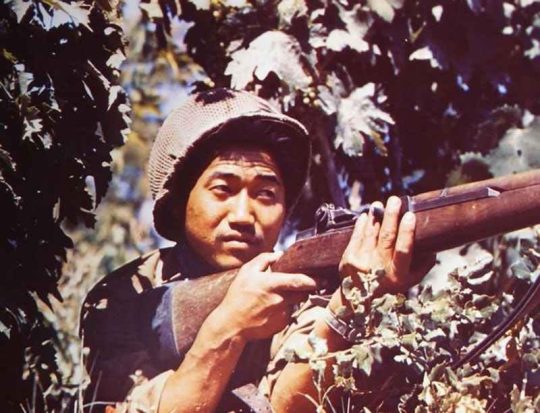
Soldat du 100e Bataillon d'infanterie américaine et son fusil M1 Garand – Campagne d'Italie – Italie – 1940's
#WWII#campagne d'italie#italian campaign#armée américaine#american army#us army#100e Bataillon d'infanterie us#100th Infantry Battalion#arme d'infanterie#infantry weapon#fusil#rifle#M1 Garand#italie#italy#1940's
7 notes
·
View notes
Text

A U.S. Sherman M4A3, possibly from the 781st Tank Battalion assigned to the 100th Infantry Division, waiting to cross the River Neckar in Heilbronn, Germany, 1945
51 notes
·
View notes
Text
An updated (January 9, 2025 9:04pm pst) list of WW2 movies and TV shows in chronological order
thought out WW2 -(Imitation Game 2014) -(The Book Thief 2013) -(The Zookeeper’s Wife 2017) -(The Pianist 2002)
1937
October 26, 1937 Defence of Sihang Warehouse (The Eight Hundred 2020)
December 13, 1937 Nanjing Massacre - (John Rabe 2009) - (The Flowers of War 2011)
1938
Fall of 1938 (Munich – The Edge of War 2022)
1939
Summer 1939 (Six Minutes to Midnight 2020)
September 3, 1939 King George VI first wartime speech (King’s Speech 2010)
September 17, 1939, Soviet Union Invitation of Poland (The Way Back 2010)
November 30, 1939 Soviet Union invades Finland (The Winter War 1989)
1940
April 9, 1940 Operation Weserübung -(April 9th [movie] 2015) -(King’s Choice 2016) -(Narvik 2022) -(War Sailors 2023)
April 27, 1940 (Into the White 2011)
June 4, 1940 -Churchill gives “We Shall Fight on the Beaches” speech (Darkest Hour 2017) -Dunkirk Evaluation (Dunkirk 2017)
July 10-October 31, 1940 Battle of Britain (Battle of Britain 1969)
1941
May 1941 (Call to Spy 2019)
June 22, 1941 Operation Barbarossa -(Fortress of War [The Brest Fortres 2010) -(Defiance 2008)
September 8, 1941, Siege of Leningrad begins. -(Battle of Leningrad [Saving Leningrad] 2019) -(Leningrad 2009)
October 1941 Battle of Moscow (The Last Frontier [The Final Stand] 2020)
October 1941 Battle of Sevastopol (Battle for Sevastopol 2015)
December 7, 1941, the Empire of Japan attacks Pearl Harbor (Tora! Tora! Tora! 1970)
December 8, 1941 Japan invades Shanghai International Settlement (Empire of the Sun 1987)
1942
January 20, 1942, Wannsee Conference (Conspiracy 2001)
February 1942 Battle of the Atlantic (Greyhound 2020)
February 1942 (The Railway Man 2013)
February 19, 1942, Bombing of Darwin (Australia 2008)
Spring 1942 (U-571 2000)
April 18, 1942 The Doolittle Raid (In Harm’s Way 2018)
June 4, 1942 Battle of Midway (Midway 2019)
1942 Summer Occupation of Jersey Island (Another Mother’s Son 2017 Prime)
July, 10 1942 Easy Company Trains in Camp Tocca (Band of Brothers 01x10 Currahee 2001)
July 21, 1942, Kokoda Track Campaign (Kokoda: 39th Battalion 2006)
August 7, 1942, 1st Marine Division land on Guadalcanal (The Pacific Ep. 1 Guadalcanal/Leckie 2010)
August 19, 1942, Dieppe Raid (Dieppe 1993)
August 23, 1942 Battle of Stalingrad begins (Stalingrad 1993)
September 1942 Formation of Troop 30 (Age of Heroes 2011)
September 18, 1942, 7th Marines Land on Guadalcanal (The Pacific Ep. 2 Basilone 2010)
Autumn of 1942 Battle of the Atlantic (Das Boot 1981)
October 18, 1942, Operation Grouse (Heavy Water War Ep. 2 2015)
November 8, 1942, Operation Torch (The Big Red One 1980)
November 10-17 1942 Vasily Zaytsev kills 225 German Soldiers during the Battle of Stalingrad (Enemy at the Gates 2001)
December 1942 The 1st Marine Division on Guadalcanal is relieved (The Pacific Ep. 3 Melbourne 2010)
December 15, 1942, Battle of Mount Austen (Thin Red Line 1998)
1943
March 13-14 1943, liquidation of the Kraków Ghetto -(Schindler’s List 1993)
April 17, 1943 Operation Mincemeat (Operation Mincemeat 2021)
April 19, 1943, beginning of the Warsaw Uprising (Uprising 2001)
May 4, 1943, Final Mission of The Memphis Bell (Memphis Bell 1990)
May 15, 1943, Salamo Arouch and his family arrive in Auschwitz Concentration Camp (Triumph of the Spirit 1989)
May 27, 1943 Louis Zamperini plane crashes on a search and rescue mission (Unbroken 2014)
May 30, 1943 first All-American Girls Professional Baseball League game played (A League of Their Own 1992)
June 25, 1943, 100th Bomb Group flew its first 8th Air Force combat mission (Master of the Air: Part One 2024)
July 1943 -(The Tuskegee Airmen 1995) -(The Liberator Ep. 1 2020) -(Heavy Water War Ep. 5 2015)
July 16, 1943, The 100th Bomb Group bombed U-Boats in Tronbhdim (Masters of the Air: Part Two 2024)
August 17, 1943 the 4th Bomb Wing of the 100th Bomb Group bombed Regenberg (Masters of the Air: Part Three 2024)
September 16, 1943, William Quinn and Charles Bailey leave Belgium (Masters of the Air: Part Four 2024)
September 18, 1943 John ‘Bucky’ Egan returns from leave to join the mission to bomb Munster (Master of the Air: Part Five 2024
October 14, 1943, John ‘Bucky’ Egan interrogated at Dulag Lut, Frankfurt Germany (Masters of the Air: Part Six 2024)
December 26, 1943, 1st Marine Division lands on Cape Gloucester (The Pacific Ep. 4 Gloucester/Pavuvu/Banika 2010)
1944
January 22, 1944, Battle of Anzio -(The Liberator Ep. 2 2020) -(Red Tails 2012) -(Anzio 1968)
February 20, 1944, Hydro Ferry bombing (Heavy Water War Ep. 6 2015)
March 7, 1944, Stalag Luft III Sagan, Germany, Germans find the concealed radio Bucky was using to learn news of the War (Master of the Air: Part Seven 2024)
March 24/25, 1944 Allied Mass Escape of Stalag Luft III (The Great Escape 1963)
June 1944 (Cross of Iron 1977)
June 6, 1944, 00:48 & 01:40 First airborne troops begin to land on Normandy (Band of Brothers 02x10 Day of Days 2001)
June 6, 1944, 06:30 D-Day landings -(Storming Juno 2010)
-(Saving Private Ryan 1998)
June 10, 1944, Easy Company Takes Carentan (Band of Brothers 03x10 Carentan 2001)
June 15-July 9, 1944 Battle of Saipan
-(Windtalkers 2002)
-(Oba: The Last Samurai 2011)
July, 1944 The Monuments Men land in Normandy (The Monuments Men 2014)
July 20, 1944 Operation Valkyrie (Valkyrie 2008)
August 12, 1944, The 332nd Fighter Group attack Radar stations in Southern France (Masters of the Air: Part Eight 2024)
September 15, 1944, U.S. Marines landed on Peleliu at 08:32 (the Pacific Ep. 5 2010)
September 16, 1944, U.S Marines take Peleliu Airfield (the Pacific Ep. 5 2010)
September 17, 1944, Operation Market Garden
-(Band of Brothers 04x10 Replacements 2001)
-(A Bridge Too Far 1977)
October 2, 1944 Battle of Scheldt (Forgotten Battle 2021)
October 12, 1944, Battle of Peleliu, Assault on Bloody Nose Ridge (the Pacific Ep. 7 Peleliu Hills 2010)
October 13, 1944, Rovaniemi public buildings were destroyed (Sisu 2022)
October 14, 1944, Erwin Rommel is arrested (Rommel 2012 Prime)
October 22/23, 1944, 2100 – 0200 Operation Pegasus (Band of Brothers 05x10 Crossroads 2001)
November 1944 middle of the Battle of Hürtgen Forest (When Trumpets Fade 1998)
December 16, 1944, Battle of the Bulge (Band of Brothers 06x10 Bastogne 2001)
December 1944 (Hart’s War 2002)
1945
January 2, 1945 (The Liberator Ep 3 2020)
January 10, 1945 (Attack Force Z)
January 13, 1945, Battle of Foy (Band of Brothers 07x10 The Breaking Point 2001)
January 30, 1945 The Raid at Cabanatuan (The Great Raid 2002)
February 14, 1945, David Webb rejoins the 506th in Haguenau (Band of Brothers 08x10 The Last Patrol 2001)
February 19, 1945, Battle of Iwo Jima starts. - (Letters from Iwo Jima 2006) - (The Pacific Ep. 8 Iwo Jima 2010) - (Flags of our Fathers 2006)
February 15, 1945, 6888 Battalion was inspected and marched in review before Major General John C. H. Lee (Six Triple Eight 2024)
March 7, 1945, Battle of Remagen (The Bridge at Remagen 1969)
March 21, 1945, Operation Carthage (The Bombardment 2021)
April, 1945 (Fury 2014)
April 5, 1945, 506th Finds abandoned Concentration Camp (Band of Brothers 09x10 Why We Fight 2001)
April 17, 1945 Lee Miller arrives at Concentration Camp Buchenwald (Lee 2023)
April 26, 1945, near the end of the war in Europe (A Woman in Berlin 2008)
April 29, 1945, 45th Infantry Division liberated Dachau Concentration camp (The Liberator Ep. 4 2020)
May 2, 1945, Fall of Berlin -(Downfall 2004) -(Jojo Rabbit 2019)
May 1945 Battle of Okinawa -(Hacksaw Ridge 2016) -(The Pacific Ep. 9 Okinawa 2010)
May 7, 1945, Germany Surrenders V-E Day - (Master of the Air: Part Nine 2024) - (Band of Brothers 10x10 Points 2001)
July 30, 1945, USS Indianapolis sank. (USS Indianapolis 2016)
August 15, 1945, The Empire of Japan surrenders end of the War. -(Oppenheimer 2023) -(The Pacific Part Ten: Home 2010)
September 11, 1945 US Military search and Arrest Japanese Leaders for war crimes (Emperor 2012)
1946 April 29, 1946 Tokyo War Crimes Tribunal (Tokyo Trial 2016)
78 notes
·
View notes
Text

U.S. Army soldiers assigned to the 100th Infantry Battalion roleplay as OPFOR during a simulated engagement
7 notes
·
View notes
Text

Romay Davis (née Johnson, October 29, 1919 - June 21, 2024) was a Congressional Gold Medal recipient known for her service in the first all-female, all-Black unit in the Army that was deployed overseas during WWII.
She was born and grew up in Virginia with her five brothers. At the start of WWII, she worked for the US Mint. She joined the Women’s Army Corps in 1943 and was one of 885 women who served in the Army’s 6888th Central Postal Directory Battalion. She was first deployed to England after departing New York City. The battalion sorted a large backlog of mail, and the group moved to France to sort mail that had accumulated there. Her primary role was as a driver, though she did sort mail. She returned to the US in November 1945 and was honorably discharged from the Army. She moved to New York City where she graduated from New York’s Traphagen School of Fashion and worked for the company Glen of Michigan as a designer for over thirty years. She returned to school at New York University and earned an MS in Technology and Industrial Education. She earned a second-degree black belt in Taekwondo, after starting karate at the age of 73.
At the age of 81, she started working in a Winn-Dixie grocery store. In 2020, its parent company, Southeastern Grocers, Inc., initiated the Romay Davis Belonging, Inclusion, and Diversity Grant to fund minority-supporting organizations.
On her 101st birthday, the city of Montgomery honored her with a parade and declared her birthday “Romay Davis Day”. The town had celebrated her 100th birthday.
She married Jerry Davis, whom she met in New York City when he worked for the New York City subway system. #africanhistory365 #africanexcellence
3 notes
·
View notes
Text
also since i’m here thank you all for the Law love🫶 i’ve been thinking abt writing a short prologue-sequel story of some of the 100th’s shenanigans and they’d center around him! He is their commander after all. I just havent fleshed out the battalion 🥲🥲 I had the idea of asking YOU GUYS for clone ideas for some of the soldiers, so i could mix some of my own ideas and some of yours to make a little group of clones! My asks are always open, but so are the comments if you have any clone ocs or head cannons to offer up!!
5 notes
·
View notes
Text
“Incomparable influence”… BTS J-Hope becomes the first Korean solo singer to enter the ‘Global Top 100 Spotify Followers’ list (TOPS STAR NEWS)

J-Hope of BTS set the first record on the world's largest music platform, proving his unrivaled popularity, influence, and ripple power beyond his artistic vision.
According to ChartMasters, a French music industry analysis company, on the 11th, J-Hope surpassed 16.43 million followers on Spotify and ranked 100th among singers around the world. J-Hope is the first Korean solo singer to enter Spotify's global top 100 ranking.
Currently, the world's number one Spotify follower is Ed Sheeran with 115.2 million, and the top 100 includes Taylor Swift at 3rd (91.9 million), Drake at 6th (81.65 million), and Michael Jackson at 47th (29.25 million). ), and the world's best pop stars, including The Beatles (26.49 million), ranked 52nd.

There are only four Korean singers named in the top 100: BTS (70.8 million) in 11th, Blackpink (46.67 million) in 18th, Twice (19.2 million) and J-Hope in 88th.
J-Hope has remained at the top for 4 years and 7 months since becoming the number one Korean solo singer on April 8, 2019, surpassing 1.34 million followers on Spotify.
The reason why J-Hope is able to show off such global popularity and influence is that while she is focusing on group activities as a member of BTS, she consistently releases solo works written and composed by herself, demonstrating her own style as a solo artist. Because it has built a reputation.

In 2018, he released the solo mixtape album 'Hope World', setting a record of becoming the first Korean solo artist to enter the Billboard 200 main album chart for two consecutive weeks. In 2019, she released her solo single 'Chicken Noodle Soup' (feat. Becky G), becoming the first Korean solo singer to enter the main single charts in the US, UK and Canada simultaneously in 7 years since Psy, becoming a global sensation. caused.
In 2022, he released his first full-length solo album, 'Jack In The Box', which ranked 17th on the Billboard 200, and the physical album version released in August of this year ranked 6th on the Billboard 200.

In addition, he was the first Korean singer to perform as a headliner at the American music festival Lollapalooza, receiving love from music fans around the world.
Meanwhile, J-Hope is currently serving as an assistant instructor in the 36th Infantry Division Recruit Training Battalion, Wonju Army, Gangwon-do, and is scheduled to be discharged on October 17, 2024.
Source: Top Star News
4 notes
·
View notes
Text

A Japanese American soldier inspects a uniform of the 100th Infantry Battalion, an all-Japanese American unit. 1943.
12 notes
·
View notes
Text
The 100th Infantry Battalion

2 notes
·
View notes
Photo

“Military Units and Sea Cadets Attend Church,” Winnipeg Tribune. April 18, 1932. Page 3. --- The Winnipeg Sea Cadets, the 78th Overseas Grenadiers Battalion association and the 100th Winnipeg Grenadiers attended church on Sunday morning. At the upper right are shown the 78th association marching to B. Matthew's church. In the centre are the Winnipeg Sea Cadets marching to First Presbyterian and the lower picture shows the 100th Winnipeg Grenadiers marching to St. Paul's United church. On the left Brigadier T. V. Anderson, DSO, is shows taking the salute as the Sea Cadets march past the reviewing stand near the corner of Portage and Maryland.
#winnipeg#sea cadets#winnipeg grenadiers#military parade#attending church#cadet training#military cadets#military veterans#canadian veterans#great depression in canada#canadian military
1 note
·
View note
Text

'American Samurai'
Two color guards and color bearers of the Japanese-American 100th Battalion, 442d Combat Team, stand at attention, while their citations are read. They are standing on ground in the Bruyères area, France, where many of their comrades fell.
November 12 1944
(Bruyères is a commune in the Vosges department in Lorraine in northeastern France)
Through a series of costly battles—first in Italy, then in France—the 442nd Regimental Combat Team would become the most highly decorated unit of its size and length of service in the history of the U.S. Army, receiving an unprecedented 8 Presidential Unit Citations, 21 Medals of Honor, and 9,486 Purple Hearts.
The 4,000 men of the team who first went into action in 1943 had to be replaced three and a half times to make up for those who were killed, wounded, and missing in action. They helped win Japanese Americans’ personal battle as well,
proving that their loyalty to the United States was beyond question. On July 15, 1946, the survivors of the 442nd marched down Constitution Avenue in Washington, D.C., becoming the first military unit returning from the war to be reviewed by President Harry S. Truman. “You fought not only the enemy,” President Truman told them that day, “you fought prejudice, and you have won.”
(Photo source - US Signal Corps SC196716)
(Colorized by Jared Enos from the USA)
0 notes
Text
Masters of the Air Review
During the Second World War, a group of airmen risks their lives with the 100th Bomb Group, a brotherhood forged by courage, loss, and triumph.
Every decade brings forth a new miniseries dedicated to recounting the events of the Second World War. In the 2000s it was Band of Brothers, a cinematic masterpiece chronicling the challenges faced by E Company of the 506th Parachute Infantry Regiment. In the 2010s it was The Pacific, a less focused but harrowing look at the Pacific Theater through the eyes of three Marines of the 1st Marine Battalion. Now in the 2020s, it is Masters of the Air, an intimate look at the 100th Bombardier Group of the US Army Air Force whose staggering loss of life led to it being dubbed, “The Bloody Hundredth”. Given the track record of these series being co-produced by Steven Spielberg and Tom Hanks, one would expect nothing short of a masterpiece. Sadly, Masters of the Air struggles to maintain altitude as it is constantly on the verge of stalling.
The series launches with gripping intensity as we shadow three members of the Bloody Hundredth during their initial weeks of aerial combat. What begins with excitement swiftly morphs into sheer horror as they confront the Nazi Regime head-on. The aerial combat sequences are both exhilarating and harrowing, capturing the unsettling juxtaposition of the cold, claustrophobic confines of the B-17 and the vulnerability of the bombers in combat. These scenes are so vividly portrayed that they induce a visceral reaction, leaving viewers on the edge of their seats and marveling at the courage of these men undertaking what seems like suicide missions. Despite some questionable visual effects, these moments represent the series at its zenith. Then, as silence falls and only screams pierce the air, viewers are confronted with the stark reality of war in its most harrowing form.
However, this robust momentum abruptly stalls just shy of the series midpoint, as any semblance of narrative structure and pacing dissipates. The storyline becomes bloated with an excess of characters and side plots that are never adequately developed. Many of these subplots are either magically resolved by the next episode or are dropped entirely by the narrative. Some of these threads could have flourished if given dedicated episodes rather than a mere 10-minute snippet. For example, an entire episode could have been devoted to the harrowing journey of shot-down airmen making their escape out of Nazi-controlled Europe to evade capture. Or a couple of episodes to explore the relationship between the Bloody Hundreth and the Tuskegee Airmen, rather than introducing the Tuskegee Airmen in episode eight out of a nine-episode series. Sadly, because the series refused to give some of these narratives time to breathe they ultimately feel like filler. Unfortunately, due to the series' reluctance to allow these narratives room to breathe, they ultimately feel like filler. Additionally, significant events such as D-Day are glossed over entirely, missing valuable opportunities to bring history to life. While the series does manage to tie things together satisfactorily in the final episode, it struggles to maintain engagement with its disjointed narrative throughout.
Another factor contributing to the difficulty in remaining engaged with the show was the lack of depth in each character, rendering them as mere caricatures of stereotypical World War II soldiers. Characters were a cornerstone of both Band of Brothers and The Pacific, remembered for their intricate portrayal of soldiers facing the turmoil of war with depth and authenticity. In Masters of the Air, the cast strives to inject life into their one-dimensional roles, yet they are hindered by the limitations of their material. Austin Butler, Callum Turner, and especially Anthony Boyle, deliver commendable performances, one can’t help but wonder how much more impactful their portrayal would have been with fully realized characters.
In essence, Masters of the Air delivers a captivating yet profoundly flawed depiction of the 100th Bombardier Group's tumultuous journey. While the series adeptly captures the raw intensity of aerial combat and provides poignant insights into the sacrifices of its courageous subjects, it stumbles significantly in its storytelling, character depth, and pacing. Despite a talented ensemble cast, the series fails to capitalize on its potential as it gets lost in the clouds.
My Rating: C+
#film#cinema#movies#movie#filmmaking#filmmaker#moviemaking#moviemaker#cinephile#cinematography#cinematographer#movie review#film critic#movie critic#film review#letterboxd#film reviews#movie recommendation#series review#world war 2#world war ii#bloody hundreth#austin butler
1 note
·
View note
Video
tumblr
Video from the Ukrainian 51st Separate Territorial Defense Battalion, 100th Separate Territorial Defense Brigade + Volyn Police showing them hitting a Russian T-90M with an Excalibur 155mm guided artillery shell near Kreminna.
33 notes
·
View notes
Link
Check out this listing I just added to my Poshmark closet: Go For Broke Hardcover Book with DJ by Chester Tanaka.
0 notes
Text
442-RCT's The Rescue of the Lost Battalion (Watanabe)
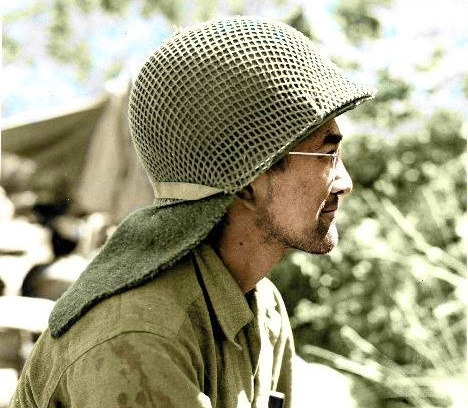
Document Source: A thesis presented to the Faculty of the US Army Command and General Staff College in partial fulfillment of the requirements for the degree Master of Military Art and Science, Military History, by Maj Nathan K. Watanabe, USA B.S., US Air Force Academy, Colorado, 1988, Fort Leavenworth, Kansas 2002 (Doc Snafu Final Check September 12, 2022)
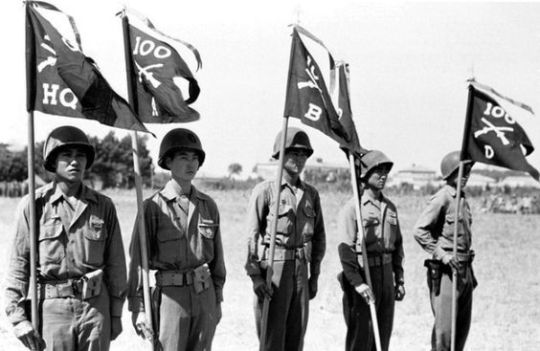
Introduction

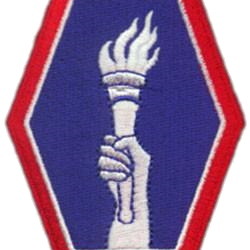
The 442nd Infantry Regiment, later 442nd Regimental Combat Team, was an infantry regiment of the United States Army and was the only infantry formation in the Army Reserve. The regiment is best known for its history as a fighting unit composed almost entirely of second-generation American soldiers of Japanese ancestry (Nisei) who fought in World War II. Beginning in 1944, the regiment fought primarily in the European Theatre, particularly in Italy, southern France, and Germany. The story of the 442nd Regimental Combat Team (442-RCT) is rooted in the history of the Japanese in Hawaii and America itself. As the second generation of Japanese born abroad or the first Japanese generation born in Hawaii and America through the early 1910s and 1920s, the Nisei were American citizens and part of the larger greatest generation to be of the right age to face the conflict of World War II. This generation of Japanese born abroad best personifies the blending of American and Japanese cultures that laid the foundation for a resolute, cohesive, and dedicated unit that accomplished every assigned mission without fail.


The 442nd Regiment is the most decorated unit in the US military history. Created as the 442nd Regimental Combat Team when it was activated on February 1, 1943, the unit quickly grew to its fighting complement of 4000 men by April 1943, and an eventual total of about 14.000 men served overall. The unit earned more than 18.000 awards in less than two years, including 9.486 Purple Hearts and 4.000 Bronze Star Medals. The unit was awarded eight Presidential Unit Citations (five earned in one month). Twenty-one of its members were awarded Medals of Honor. In 2010, the Congressional Gold Medal was awarded to the 442nd Regimental Combat Team and associated units who served during World War II, and in 2012, all surviving members were made chevaliers of the French Légion d'Honneur for their actions contributing to the liberation of France and their heroic rescue of the Lost Battalion.


Arriving in the European Theatre, the 442nd Regimental Combat Team, with its three infantry battalions, one artillery battalion, and associated HQ and service companies were attached to the 34th Infantry Division. On 11 June 1944, near Civitavecchia, Italy, the existing 100th Infantry Battalion, another all-Nisei fighting unit that had already been in combat since September 1943, was transferred from the 133rd Infantry Regiment to the 442nd Regimental Combat Team. Because of its combat record, the 100th was allowed to keep its original designation, with the 442nd renaming its 1st Infantry Battalion as its 100th Infantry Battalion. The related 522nd Field Artillery Battalion liberated at least one of the satellite labor camps of Dachau concentration camp and saved survivors of a death march near Waakirchen.
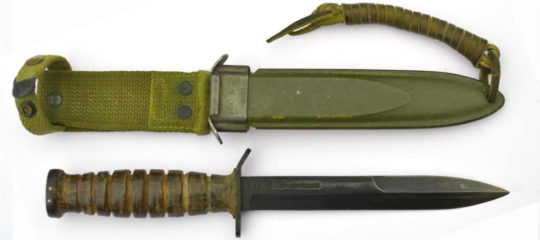
The 442nd saw heavy combat during World War II and was not inactivated until 1946, only to be reactivated as a reserve unit in 1947 and garrisoned at Fort Shafter, Hawaii. The 442nd lives on through the 100th Battalion/442nd Infantry Regiment, which has maintained alignment with the active 25th Infantry Division since a reorganization in 1972. This alignment has resulted in the 100th/442nd Infantry Regiment's mobilization for combat duty in the Vietnam War and the Iraq War, in which the unit was awarded the Meritorious Unit Commendation. With the 100th/442nd Infantry Regiment the last infantry unit in the Army Reserve, the 442nd's current members carry on the honors and traditions of the historical unit.
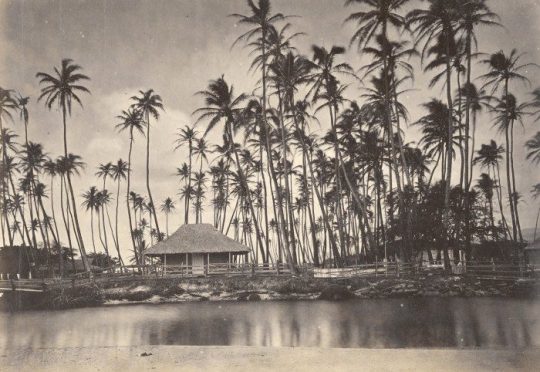
Last Voyage of the Inakawa-Maru - 1806 The first known arrival of Japanese to the Kingdom of Hawaii came on May 5, 1806, involving survivors of the ill-fated ship Inawaka-maru who had been adrift aboard their disabled ship for more than seventy days. The Inawaka-maru, a small cargo ship built in 1798 in Osaka, was owned by MansukeMotoya of Kitaniura, Hiroshima, and was chartered by the Kikkawa fiefdom in Iwakuni, a district in the present Yamaguchi prefecture, to transport floor mats and horse feed to the residence of the Kikkawalord in Edo (Tokyo today). The trip began in November 1805. The ship was manned by Capt Niinaya Ginzo, thirty-three years old; Master Ichiko Sadagoro, fifty-three; and four sailors: Hirahara Zenmatsu, thirty-four; Akazaki Matsujiro, thirty-four; Yumori Kasoji, thirty-one, all from Kitaniura; and Wasazo, twenty-seven, from Higashinomura. The ship departed from Kitaniura, Hiroshima, on November 7, 1805, and took on its designated cargo together with two officials of the Kikkawa fiefdom at Iwakuni. Before leaving for Edo, however, the ship returned to Kitaniura and then headed for Edo on November 27, 1805. On December 21, 1805, the Inawaka-maru arrived in Shinagawa, a port in Edo. After unloading the cargo headed southward stopping at Kanagawa, Uraga, and Shimoda. On January 6, 1806, the vessel departed Shimoda for its final homebound voyage.
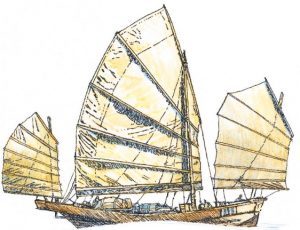
While crossing the Sea of Enshunada near the Shizuoka prefecture, the Inawaka-maru encountered a snowstorm backed by a strong east wind. The snowstorm turned into heavy rain, and the wind became stronger. The ship was soon disabled and was blown toward the Eastern Pacific. On January 7, 1806, due to the increased force of the wind, the crew cut the mast down, and the disabled ship began drifting further eastward. On January 11, two rocky islets were sighted, but a decision was made not to make a landing. The ship continued drifting eastward. The supply of water ran out on January 20. Except for relief during an occasional rainfall, the crew often went without water for four or five days. Rainwater was collected by every means possible. At times they had to quench their thirst by sucking on cloth that contained some moisture. By February 28, the supplies of rice and water were nearly exhausted. The last dinner was cooked with the last little supply of rice. They all prepared for death, hoping that their ship would take them to their Buddhist paradise. On March 15, a flying fish jumped into the ship. Zenmatsu made a soup with it and shared it with the rest of the crew. They made hand-made hooks and used the innards of the flying fish to catch more fish. In this way, they were able to regain their strength. Some fish were saved by drying.
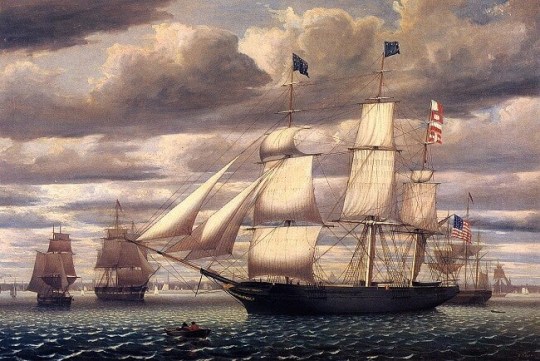
On March 20, 1806, a foreign ship appeared. The crew of the Inawaka-maru climbed onto the deckhouse roof and signaled the ship by waving a mat and shouting for help. At first, they seemed not to have been seen, but finally, the ship came closer and lowered her sails. Four foreigners, including one carrying a sword, who seemed to be the captain, came up on deck as the ship circled around the Inawaka-maru. Upon realizing that the Japanese vessel was disabled, they came aboard. Two sets of Japanese swords that belonged to the two officials from Iwakuni were found in a closet at the stern and were confiscated. The captain asked the Japanese something, but they could not understand English. The Japanese asked for food by putting their hands on their stomachs, pointing to their mouths, and bowing with their hands together. The captain touched each one's stomach and took a look around the galley. When he realized that they had no food or water, he took all eight Japanese on board his ship, assisting them by taking their hands and putting his arms around them. The personal belongings of the Japanese were also transferred. The rescuing ship was an American trading vessel, the Tabour, commanded by Captain Cornelius Sole. The Japanese had been rescued after being adrift in the Pacific for more than seventy days. Aboard the Tabour, the Japanese were served a large cup of tea with sugar.

It tasted so good that they asked for more, but the captain did not allow them to eat anything more on that day (remedy for starvation). On the following day, they were given two cups of sweetened tea followed by a serving of gruel. This was repeated for another three days. On the fifth day, when everyone gradually became well, they were served rice for breakfast and dinner and bread for lunch. The bread, tasted by the Japanese for the first time, was described by Zenmatsu as similar to a Japanese confection called Higashiyama, which is shaped round like a cross-section cut of thick daikon (radish). The Japanese had no words to express their gratitude and they were deeply touched by the kind treatment received from the foreigners. On May 5, 1806, the Tabour arrived in Hawaii and docked in Oahu after forty-five days of sailing following the rescue. Zenmatsu reported being rescued by a foreign ship at 4000 RI (9760 miles) from Hawaii and 1000 RI (2440 miles) from Japan. He also stated that the distance between Japan and Hawaii is 5000 RI (12.200 miles). Zenmastu was considerably off in his distance estimation as the distance between Japan and Hawaii is 3800 miles. According to Zenmatsu, nearly five hundred men and women onlookers gathered around them when they disembarked from the ship.
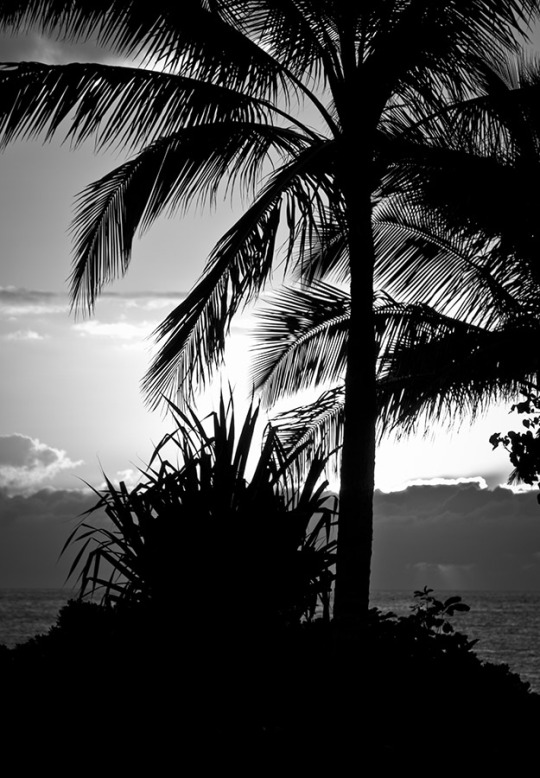
They camped outdoors on the night of their arrival. Steamed potatoes (sweet potato or taro) were brought to them the following day. On the second day after their arrival, Zenmatsu reported, the building of a house for the Japanese was started, probably on orders of the chief. More than fifty persons were engaged in cutting trees from the mountains and building a house with a thatched roof. Only four days after their arrival, the house was completed, and the eight Japanese moved in. People brought Kalo (taro) and Uala (sweet potatoes) in gourd containers while the house was being constructed. A fence was built around the house when the Japanese moved in to prevent others from entering, and a cook was assigned to prepare meals for them. Two Hawaiian guards were assigned since so many onlookers were gathering around the fence trying to look into the house. To satisfy the onlookers' curiosity, four Japanese in turn walked inside the fence and after a while, people started leaving, talking to each other. More and more onlookers arrived for almost two weeks, but their numbers gradually diminished to thirty to fifty a day.
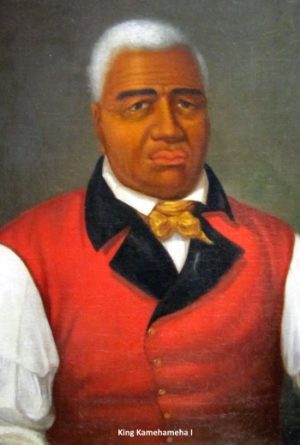
The Japanese remained in Hawaii for more than three months until an American ship offered to take them home. When the trading ship Perseverance, commanded by Captain Amasa Delano, arrived in Hawaii, Delano learned that Captain Sole had left the Japanese under the care of King Kamehameha I until another ship could take them back to Japan via China. Capt Sole left one of the anchors from the Japanese wreck, forty axes, and some other articles to compensate for their living in Hawaii. Sole also left a note describing the Japanese for anyone who could take them back to Japan. Thus, Delano offered to take them as far as China so that they could find their way back home on another ship inasmuch as only Dutch and Chinese ships were allowed to enter Nagasaki, the only port then open to foreigners. On August 17, 1806, all eight Japanese left O'ahu with Delano aboard the Perseverance. Zenmatsu described the departure in personal terms: August 15, was a day for festivities for our home village shrine. Everyone felt so homesick, longing to return home. On that same day, an American trading ship, the Perseverance, about 2000 Goku (300 tons), with a crew of sixty-three, arrived in Hawaii for their provisions. Learning of our presence, they came to see us. Upon seeing a banner-like object that was left by the captain of the rescuing ship, and after talking among themselves, they urged us to board their ship.
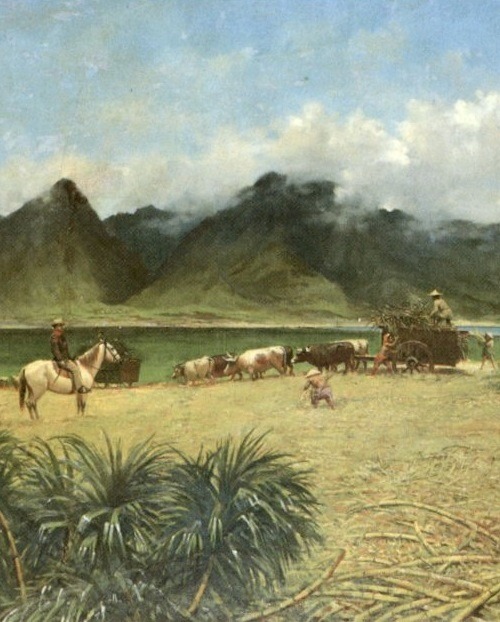
Japanese Survivors Leave Oahu - 1806 The Hawaiians, old and young, who had become friendly to us during our stay, brought taro, sweet potatoes, beef, pork, and chicken to the ship and stayed around us, and one by one bade farewell to us. When the ship left Honolulu on August 17, about five hundred Hawaiians came out to the shore, waving their hands and shouting 'goodbye'. They stayed to see us off until the ship was out of sight. We were so deeply touched that we all could not hold back our tears. About 2000 RI (4880 miles) of sailing away from Hawaii, the Americans pointed to the north saying 'Japan! Japan!' We became excited, purified ourselves, and bowed toward the direction of Japan. When we begged the Americans to take us to Japan, they indicated 'no' by gesturing with signs signifying that we would be beheaded. The Perseverance arrived in Macao on October 17, 1806. On December 25, the Japanese were sent to Jakarta, Java, on a Chinese ship. They were in Jakarta for more than four months and apparently contracted malaria and other tropical diseases.
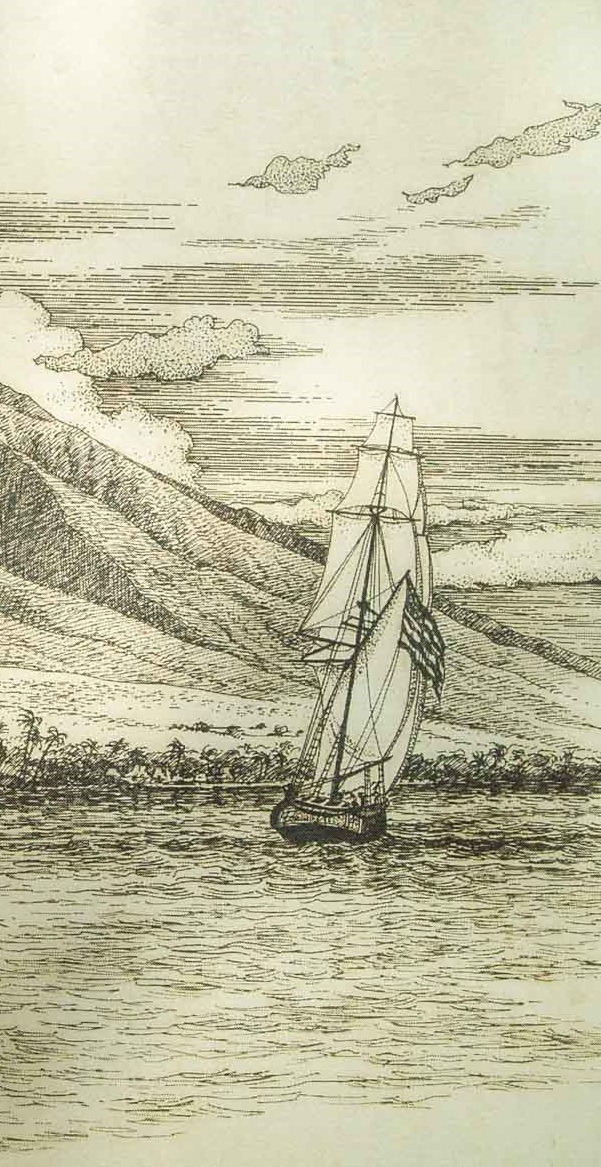
Thus, only three of the original eight finally reached Nagasaki on June 17, 1807, onboard an American ship flying a Dutch flag. All others died in Jakarta or on the ship. Unfortunately, one more died soon after returning to Nagasaki, and another committed suicide during the official interrogation there. Zenmatsu was jailed and underwent severe interrogation by officials as he had violated the Sakoku edict, which prohibited Japanese subjects from leaving the country. Zenmatsu was kept in Nagasaki for five more months before being allowed to return to his village on November 29, 1807. Soon after his return, he was summoned by Lord Asano of Aki to report on his overseas experiences. He died six months after his return. The King delegated the responsibility for the Japanese to Kalanimoku who had 50 men construct a house on May 6 for the Japanese. It took four days to build and a cook and two guards were assigned to the house, which attracted crowds to these men of different ethnicity. On August 17, the Japanese left Hawaii aboard the Perseverance to Macau. From there they took a Chinese ship to Jakarta on December 25. In Jakarta, they fell ill and five died there or on the voyage to Nagasaki where they arrived on June 17, 1807, and where another died. At the time of the Sakoku, it was illegal to leave Japan and the remaining two survivors were jailed and interrogated. One committed suicide and the remaining survivor Hirahara Zenmatsu eventually made it home on November 29 1807 but was summoned by Asano Narikata, the Daimyō of Hiroshima, to recount his odyssey of an experience titled Iban Hyoryu Kikokuroku Zenmatsu. Hirahara Zenmatsu died six months later.

Gannenmono In 1866, Eugene Miller Van Reed, a Dutch American, went to Japan as a representative of the Hawaiian Kingdom. Read the full article
#133rdFieldArtilleryBattalion#16.VGD(German)#198.PB(German)#201.-Gebirgsjäger-Bataillon#202.-Gebirgsjager-Bataillon#232ndEngineerCombatBattalion#34thInfantryDivision#388.-Infanterie-Division#3rdInfantryDivision#442ndInfantryRegiment#442ndRegimentalCombatTeam#522ndFieldArtilleryBattalion#602.-Schnellabteilung#716.-VolksGrenadier-Division#92ndInfantryDivision#933.-Grenadiere-Regiment#AkijiYoshimura#AlamoRegiment#AmericansofJapaneseAncestry#Anzio(Italy)#ArdantduPicq#ArmyHawaiianDepartment#ArnoRiver#AsanoNarikata#BelfortGap#Belmont#Belvedère#BenjaminHarrison#Biffontaine#Bologna
0 notes
Text
100th Infantry Battalion Valor and Sacrifice in World War II
100th Infantry Battalion Valor and Sacrifice in World War II
The 100th Infantry Battalion/442nd Regimental Combat Team, also known as the “Purple Heart Battalion” or the “Go for Broke” regiment, was a highly decorated unit composed primarily of Japanese American soldiers during World War II. In this blog post, we will explore the remarkable story of the 100th Regiment, highlighting their bravery, sacrifices, and the significant impact they made on the…

View On WordPress
0 notes